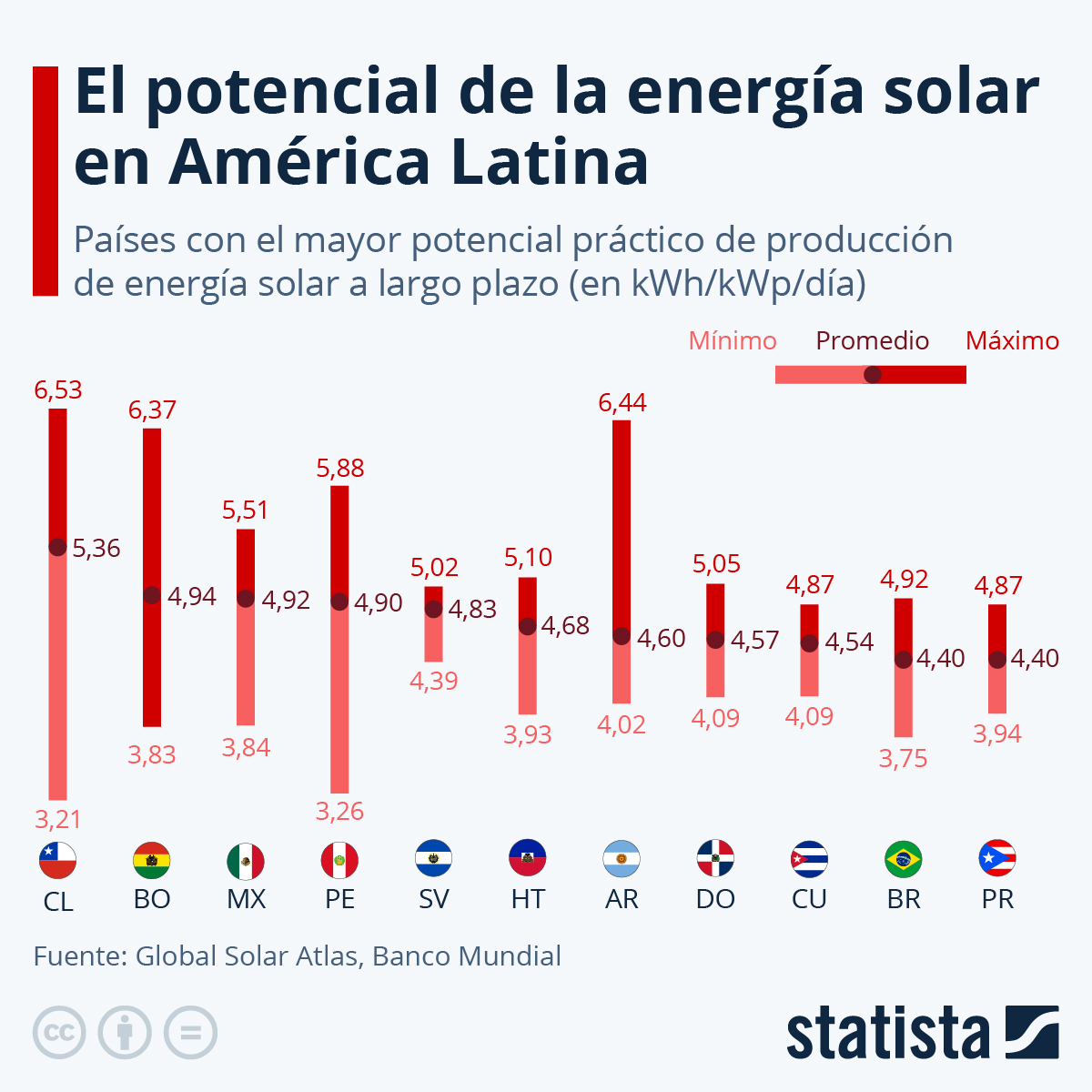Which Latin American countries have the most potential for solar energy?

In times of energy crisis and rising world prices, the development of alternative sources is essential to guarantee the energy needs of nations. Some 20% of the world’s population lives in 70 countries with “excellent conditions” for the use of solar energy, i.e. a long-term production of more than 4.5 kilowatt-hours (kWh)/kilowatt-peak (kWp) per day. This is revealed in the World Bank’s “Global Solar Atlas” report.
While only African countries collectively exceed this threshold, Latin America and the Caribbean are a close second with about 4.48 kWh/kWp per day. Much of this potential is still untapped in lower-income countries. As the report states, this is “a unique opportunity to provide affordable, reliable and sustainable electricity services to a large part of humanity, where improved economic opportunities and quality of life are most needed”.
As this chart from Statista shows, Chile is the top country in the region in terms of practical performance of a commercial-scale solar power installation, with an average of 5.36 kWh/kWp/day. It is followed by Bolivia, Mexico and Peru, which exceed a daily average of 4.90 kWh/kWp. In Central America, El Salvador and Guatemala were in the lead, while in the Caribbean, the first place went to Haiti, ahead of the Dominican Republic and Puerto Rico.
Note: The analysis includes theoretical potential, air temperature, system configuration, shading and territory, as well as topographic and land use constraints.






